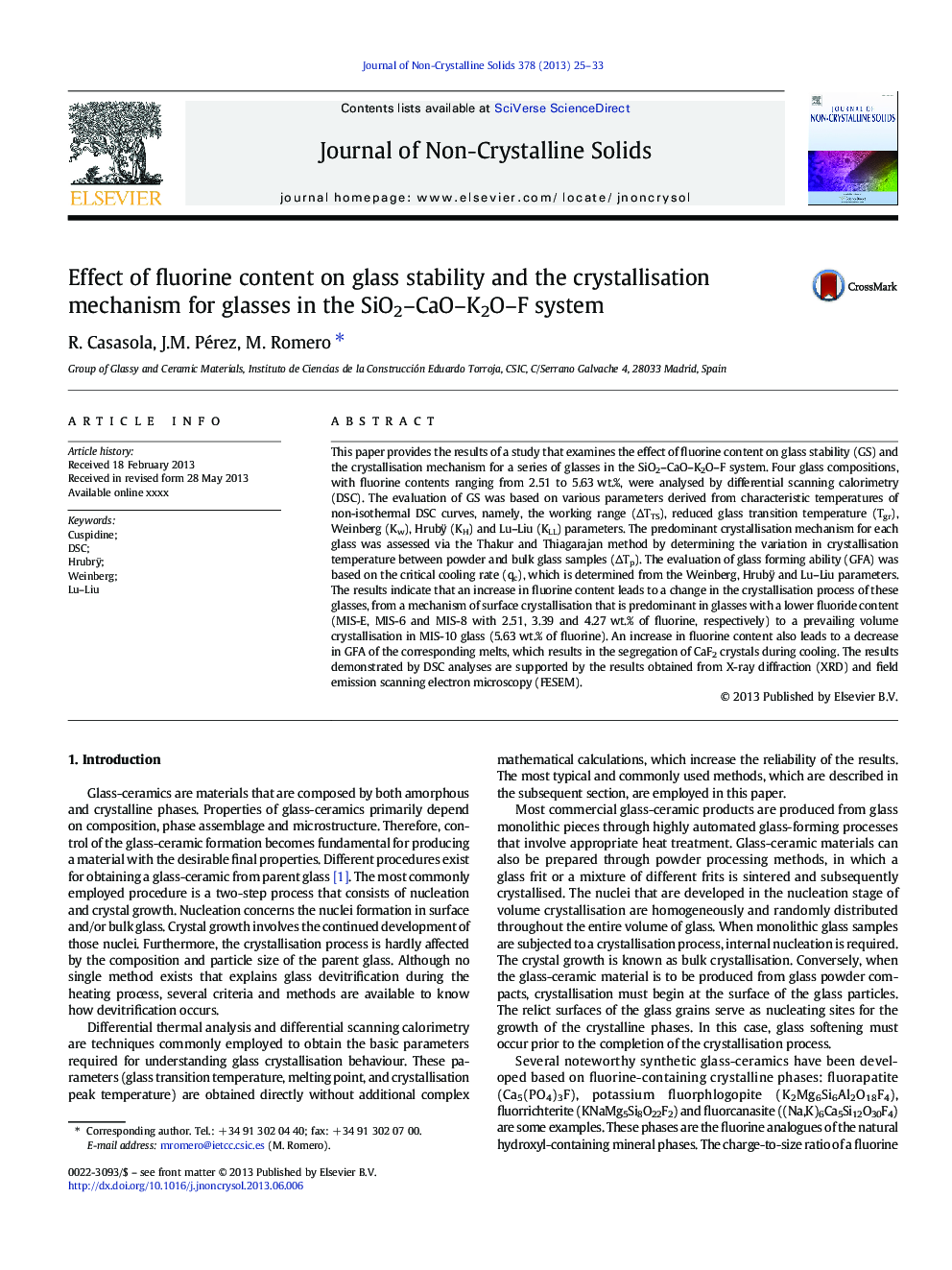| Article ID | Journal | Published Year | Pages | File Type |
|---|---|---|---|---|
| 7903353 | Journal of Non-Crystalline Solids | 2013 | 9 Pages |
Abstract
This paper provides the results of a study that examines the effect of fluorine content on glass stability (GS) and the crystallisation mechanism for a series of glasses in the SiO2-CaO-K2O-F system. Four glass compositions, with fluorine contents ranging from 2.51 to 5.63 wt.%, were analysed by differential scanning calorimetry (DSC). The evaluation of GS was based on various parameters derived from characteristic temperatures of non-isothermal DSC curves, namely, the working range (ÎTTS), reduced glass transition temperature (Tgr), Weinberg (Kw), Hrubÿ (KH) and Lu-Liu (KLL) parameters. The predominant crystallisation mechanism for each glass was assessed via the Thakur and Thiagarajan method by determining the variation in crystallisation temperature between powder and bulk glass samples (ÎTp). The evaluation of glass forming ability (GFA) was based on the critical cooling rate (qc), which is determined from the Weinberg, Hrubÿ and Lu-Liu parameters. The results indicate that an increase in fluorine content leads to a change in the crystallisation process of these glasses, from a mechanism of surface crystallisation that is predominant in glasses with a lower fluoride content (MIS-E, MIS-6 and MIS-8 with 2.51, 3.39 and 4.27 wt.% of fluorine, respectively) to a prevailing volume crystallisation in MIS-10 glass (5.63 wt.% of fluorine). An increase in fluorine content also leads to a decrease in GFA of the corresponding melts, which results in the segregation of CaF2 crystals during cooling. The results demonstrated by DSC analyses are supported by the results obtained from X-ray diffraction (XRD) and field emission scanning electron microscopy (FESEM).
Related Topics
Physical Sciences and Engineering
Materials Science
Ceramics and Composites
Authors
R. Casasola, J.M. Pérez, M. Romero,
